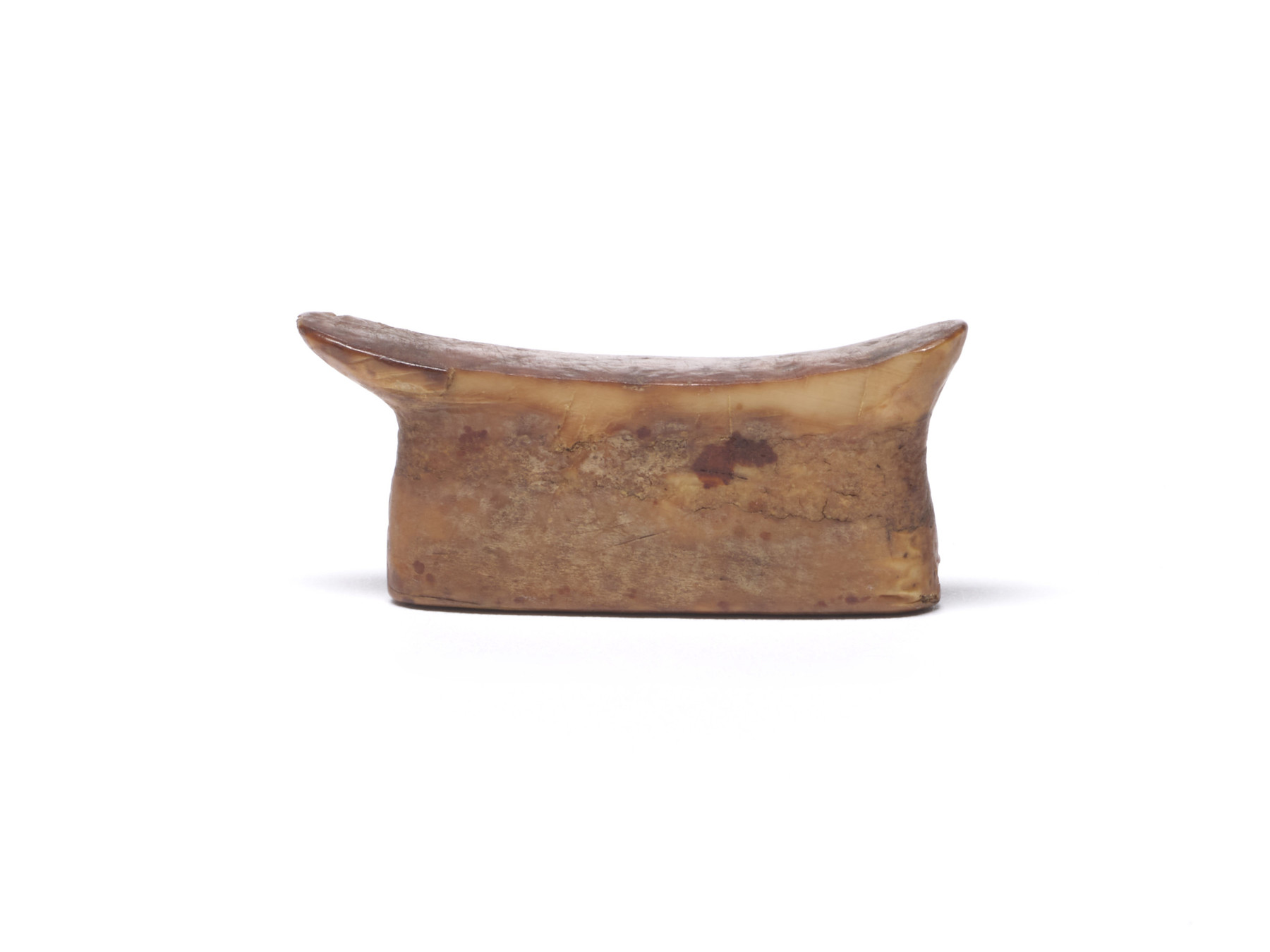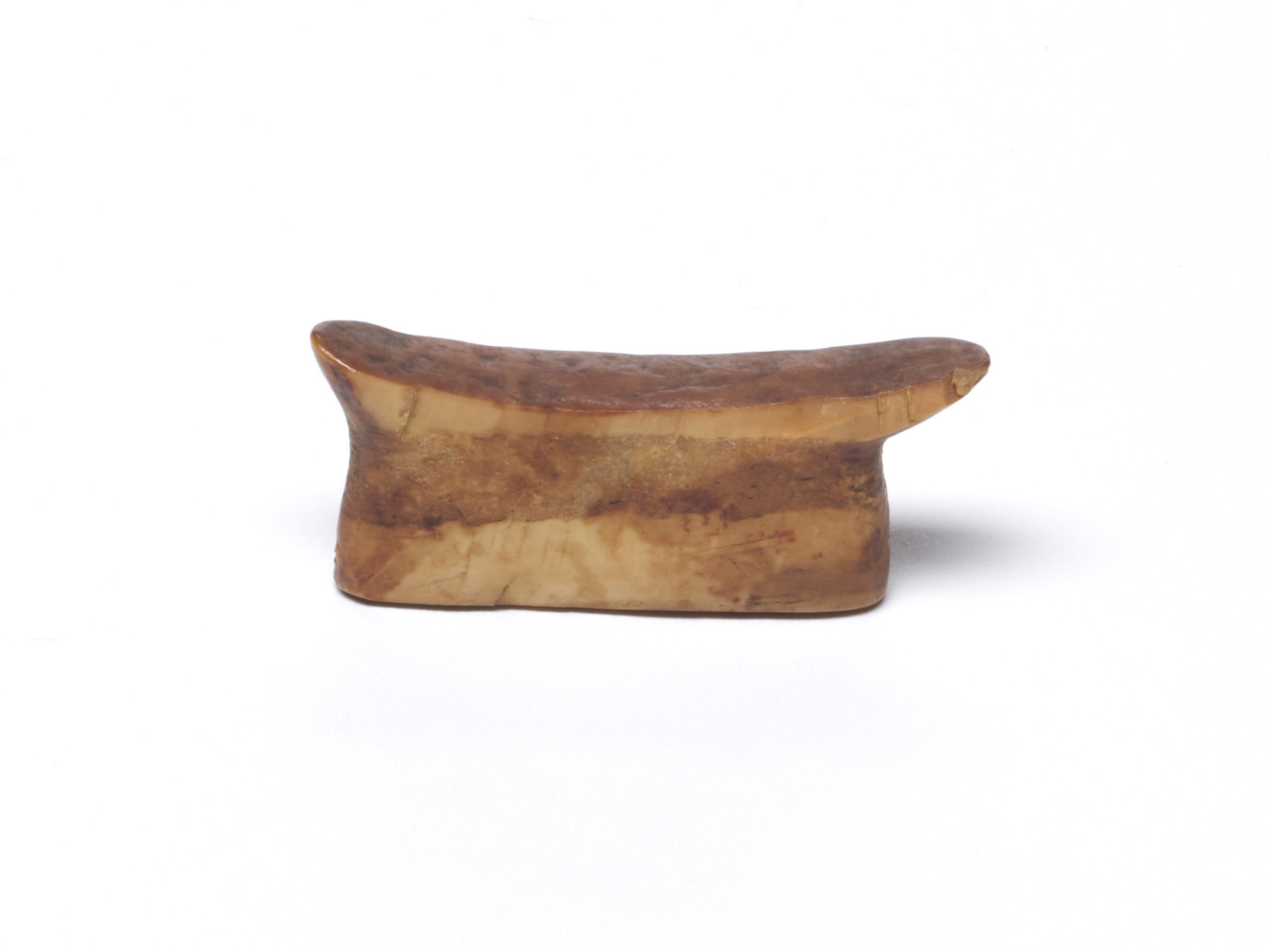Labret (lip plug)
(Jewelry)
Labrets, or ornaments worn around or under the lips, have been a powerful marker of identity and social status in a number of parts of the world. In the Alaskan context, the style, size, and decoration of such labrets conveyed information about the wearer's social and regional affiliation and identity. In some cases, people enlarged their lip piercings, and consequently their labrets, when they married or underwent other life rites of passage.
This particular labret is almost undecorated, but fairly large, suggesting it might have been worn by an older person. The larger flange would rest on the teeth inside the lip, ensuring that the labret did not fall out. It was made from walrus ivory, and while some examples are decorated with trade beads or patterns, this example is completely undecorated. These type of larger "boat-shaped" labrets may have been worn more frequently by men; it seems women wore more decorated and fringed labrets (see Walters 1985.20.19-20.)
This example was reportedly made and used by Yup'ik people on Nunivak Island, in today's Alaska. A similarly shaped labret, today in the collection of the National Museum of the American Indian was collected there between 1925-1931. When the Smithsonian Institution interviewed Native Alaskans about labrets, one resident of the region, Theresa Nanouk, stated that her mother recalled people from the south (i.e. in the Yup'ik region) wearing such labrets long ago.
Provenance
Provenance (from the French provenir, 'to come from/forth') is the chronology of the ownership, custody, or location of a historical object. Learn more about provenance at the Walters.
Mrs. Olga Pertzoff, Lincoln, Massachusetts [date and mode of acquisition unknown]; Family of Mrs. Olga Pertzoff, Lincoln, Massachusetts, 1980, by inheritance; Walters Art Museum, 1985, by gift.
Geographies
USA, Alaska (Place of Origin)
Credit Line
Gift of the estate and family of Mrs. Olga Monks Pertzoff, 1985
Location in Museum
Not on view
Accession Number
In libraries, galleries, museums, and archives, an accession number is a unique identifier assigned to each object in the collection.
In libraries, galleries, museums, and archives, an accession number is a unique identifier assigned to each object in the collection.
1985.20.360




